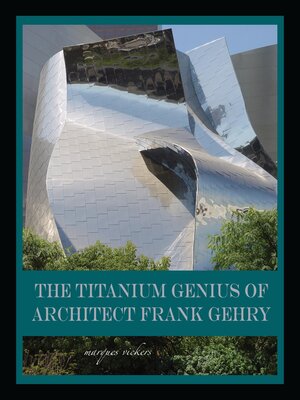
Sign up to save your library
With an OverDrive account, you can save your favorite libraries for at-a-glance information about availability. Find out more about OverDrive accounts.
Find this title in Libby, the library reading app by OverDrive.



Search for a digital library with this title
Title found at these libraries:
| Library Name | Distance |
|---|---|
| Loading... |
This edition features both the biography of architect Frank Gehry and extensive architectural photography from three of his works completed between 2000-2010.
Gehry's professional path has followed a serpentine routing upon his family's relocation to Los Angeles in 1947 from Toronto. An early design influence included a lecture that he attended by Finnish designer and architect Alvar Aalto at the University of Toronto. Aalto's unique designs incorporating flowing gentle curves, playfulness and unconventional materials would become apparent amongst Gehry's noteworthy commissions.
Gehry pursued studies in chemical engineering and was briefly a delivery truck driver before focusing his academic attention towards design. He graduated with a Bachelor of Architecture degree from the University of Southern California in 1954. Afterwards he joined the military and then followed with city planning studies at the Harvard Graduate School of Design. He did not complete the program due to personal conflicts with the curriculum and certain professors.
Gehry began work with multiple architecture firms before establishing his own Southern California practice in 1967. He cultivated a distinctive base of regional commissions before elevating his public recognition with international projects. In 1997, he earned worldwide acclaim with his Guggenheim Museum design located in Bilbao, Spain. His seemingly fresh unrestrained style was introduced globally featuring an unconventional vision, elaborate detailing nuances and titanium clad building surface skins. The recognition vaulted him into architecture superstardom.
The triumph in Bilbao earned Gehry significant and desirable international commissions. He followed the project with significant accomplishments including the Walt Disney Concert Hall (Los Angeles), Jay Pritzker Pavilion (Chicago), New World Center (Miami Beach), Stata Center (MIT), Peter Lewis Library (Princeton University), Fondation Louis Vuitton (Paris), Lou Ruvo Center For Brian Health (Las Vegas), University of Technology (Sydney) and an astonishing roster of museum upgrades.
This book's photography is concentrated on three of his projects, ranging from the highly celebrated Walt Disney Performance Center in downtown Los Angeles to the lesser-known Biloxi Ohr-O'Keefe Museum and often criticized Seattle based Museum of Pop Culture. The range of photography focuses upon the sub surface welded steel framework to examining the aging process of tinted and polished titanium exterior panels.
Titanium is an element that was discovered in 1790 and named after the Titans, earth giants documented in Greek mythology. Industrial production began following World War II. It was used primarily within the aerospace, chemical, and electric-power industries. The metal is lightweight, strong, flexible and critically important within inclement climates for its resistance to corrosion. Architects had used the material since the 1970s, but Gehry's employment with the Guggenheim Museum made him the most visible practitioner.
Frank Gehry's influence remains a defining icon for early twenty-first century architecture. His unique contribution into the fluid historical dialogue of architecture is important.







